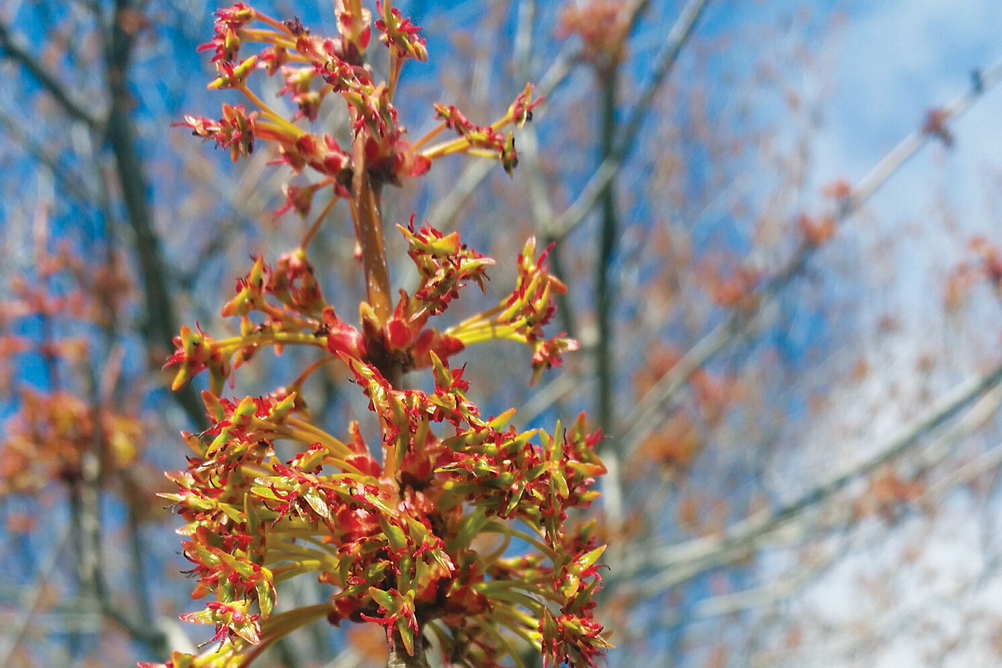Don’t forget to look up! All trees BLOOM

By Karen Santee
OSU Extension master gardener volunteer and ISA certified arborist
As spring blossoms, we usually anticipate the beautiful blooms of the crabapple trees, red buds, dogwood and even the invasive callery pear. As we gaze at these wonders, we overlook many common trees that are doing their best to put forth a successful bloom. All trees must flower to reproduce, but some are just a bit inconspicuous about it. Sometimes we simply have to look a little harder to see some amazing and unusual flowers that are dangling overhead every spring. Many of these blooms are small, but they are just as amazing if you take the time to look up!
Maple trees are all around us and began to bloom in late March. Perhaps we are all aware of the onset of maple blossoms because we find them in our gutters, on our side walks and on our cars. Even so if we look closely we might appreciate the beauty in their design. The silver (Acer saccharinum) and the red maples (Acer rubrum) have dense clusters of small reddish flowers. They began blooming just after St. Patrick’s Day this year. Sugar maples (Acer saccharin), will begin to bloom in April with small yellow green flowers in a drooping cluster that bloom before the leaves fully develop.
Oak trees will bloom beginning in April through May. It takes an oak tree about 20 years of growth before it will begin producing flowers. The oak trees are monoecious, having male and female flowers on one tree. The male flower is a yellow green catkin (spike) and the female flower is a tiny red bloom by the new growth leaves. The first of the oaks to bloom is the red oak (Quercus rubra) blooming mid-March, followed two weeks later by the white oak (Quercus alba), and the pin oak (Quercus palustris) is set to bloom in April.
The black cherry tree (Prunus serotina) is found throughout the woods of Ohio. It is one of the first trees to establish on fallow land that is allowed to return to forest via succession. Black cherry trees produce a white raceme (column) of flowers with a mild sweet fragrance. Black cherry is not as showy as the cultivated landscape cherry trees, but just as noteworthy. The flowers are valued by pollinators and produce fruit for wildlife. Look for the blossoms in April and May.
Basswood or the Linden trees (Tilia americana) are another overlooked bloomer. Unless you are a person interested in pollinators, particularly the bees, you may miss the very active bloom of this tree. The flowers bloom in the form of a cyme (umbrella shape). There are five to seven small yellow flowers on each cyme. The fragrance is very pleasant and bees just love it. The bloom period for the Linden tree is June through early July.
Some other tree blossoms that are abundant, just not so obvious, are tulip poplar (Liriodendron tulipifera),shagbark hickory (Carya ovata), hophornbeam (Ostrya virginiana) and Osage orange (Maclura pomifera).
There is and will be so much blooming going on all around us this spring. We notice the obvious beauty of the flowers in front of us, but let’s not miss the less conspicuous beauty of the flowers above us. Look up!
For more information on phenology and to see what trees are blooming next, go to: http://go.osu.edu/trackinggdd.
 43
43
